Winter can bring beauty and joy, but it also comes with the heavy responsibility of snow removal. It's essential for businesses and homeowners alike to understand the best practices and policies for staying safe and compliant during those snowy months. From ensuring clear pathways to understanding local regulations, being prepared can make a world of difference. So, let's dive into the details of effective snow removal policies and how you can stay ahead this winter!
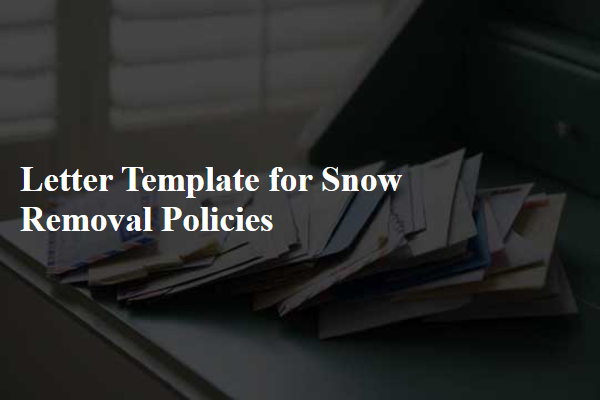
Clarity of Service Terms
Snow removal policies often detail specific terms of service that ensure timely and efficient snow clearing for residential and commercial properties. These policies may include key details such as service response times (typically within 24 hours of snowfall accumulation exceeding two inches), equipment types used (like snow plows, shovels, and salt spreaders), and geographic service areas (specific neighborhoods or towns). Additionally, safety protocols during extreme weather conditions must be outlined, emphasizing user responsibilities, such as maintaining accessible driveways and sidewalks. Clear information about pricing structures, including seasonal contracts or per-push rates, is essential for homeowners and businesses to understand financial commitments. Finally, communication channels for service updates, customer feedback, or emergency requests are critical to ensuring satisfactory service delivery.
Schedule and Frequency of Snow Removal
Residential snow removal services operate under specific policies that govern scheduling and frequency to ensure safety and accessibility. Typically, snow removal begins when snow accumulation reaches two inches or more, with crews deployed promptly during significant weather events, such as blizzards. The schedule may vary based on geographic areas, with regions experiencing frequent heavy snowfall, like the Northeast, receiving more attention compared to milder zones. Services often include clearing driveways, sidewalks, and common areas in residential communities, aiming for completion within 24 hours after a storm ends. Regular maintenance might occur after ongoing snowfall to prevent buildup, ensuring clear paths for both pedestrians and vehicles. Policies may also outline procedures regarding ice management and communication with homeowners, emphasizing timely and efficient service delivery during winter months.
Responsibilities of Property Owners
Property owners have the essential duty to ensure safe and accessible sidewalks, driveways, and parking areas during the winter months, especially in regions like the Midwest where snow accumulation often exceeds 12 inches. Snow removal responsibility typically begins within 24 hours after a snowfall event, as mandated by local ordinances in cities such as Minneapolis and Chicago. Neglecting this duty can result in fines that may reach up to $500, depending on the severity of the violation. Additionally, if property owners fail to adequately clear snow and ice, they expose themselves to potential liability for slip-and-fall accidents that can occur on their premises. It is crucial for property owners to keep all entryways clear, ensuring that pathways remain navigable for residents and visitors alike. Regular maintenance and prompt action during winter storms contribute significantly to community safety.
Safety and Compliance Guidelines
Snow removal policies outline essential safety and compliance guidelines necessary for residents and service providers in regions prone to winter weather. Effective snow removal plays a crucial role in maintaining clear pathways, reducing accident risks for pedestrians and vehicles, and ensuring community accessibility during significant snowfall events, often recorded at over 12 inches in some areas. It is imperative that property owners adhere to local ordinances, such as those imposed by municipalities like Denver, which may require snow to be cleared within 24 hours of a storm's end. Additionally, using designated equipment, such as snow plows calibrated to the specific needs of various surfaces, enhances efficiency while mitigating potential damage to pavements and surrounding landscapes. Regular inspections of snow removal equipment, coupled with the proper training of operators, are necessary to ensure adherence to safety standards and maximize operational effectiveness during harsh winter conditions.
Contact Information and Support Channels
Snow removal policies typically include vital parameters such as scheduling, guidelines, and contact information for residents. In areas prone to heavy snowfall, like Chicago, Illinois, during winter months (November to March), efficient snow removal strategies are essential. Residents can rely on municipal support channels for timely updates and assistance. Contact numbers, such as the Chicago Department of Streets and Sanitation at (312) 746-4684, offer direct access to service inquiries. Additionally, official websites often provide weather alerts and snow removal maps, ensuring effective communication regarding the status of road conditions and residential services. Email support can typically be found on official city websites, fostering community engagement and efficient response.
Letter Template For Snow Removal Policies Samples
Letter template of snow removal operations notification to local businesses.
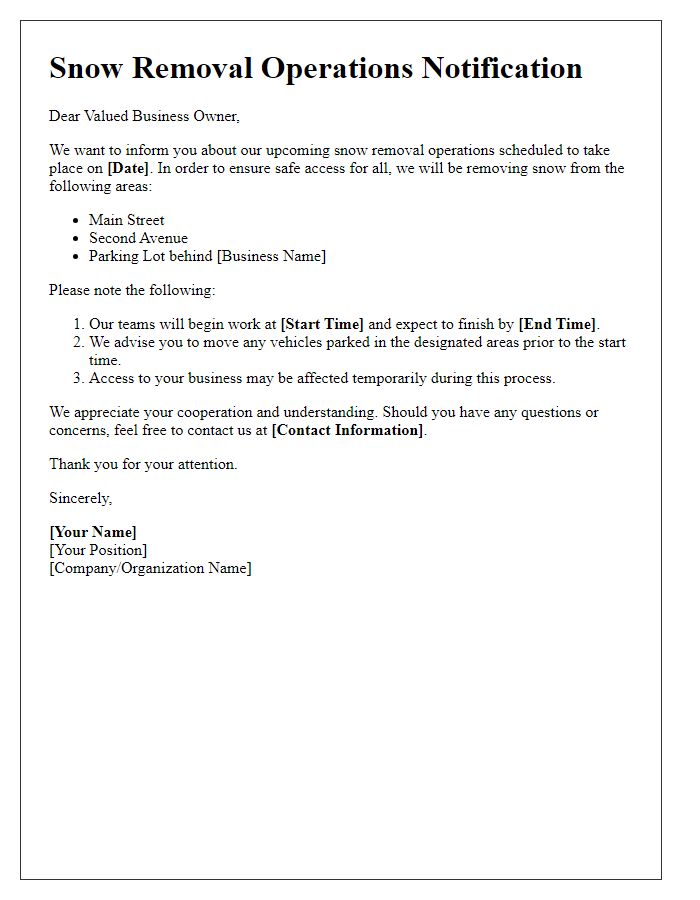
Letter template of snow removal schedule announcement for community centers.


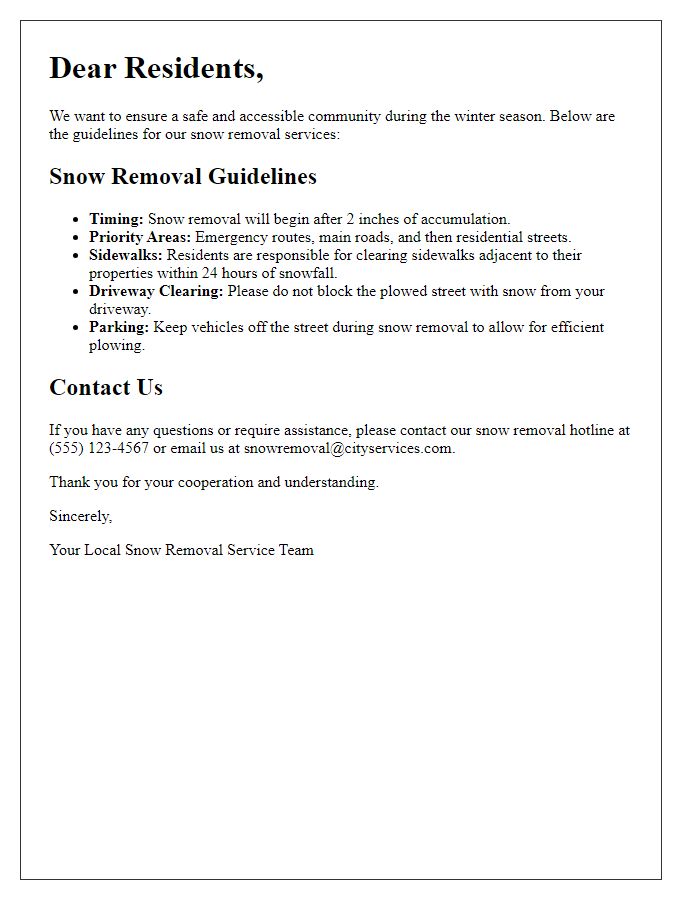
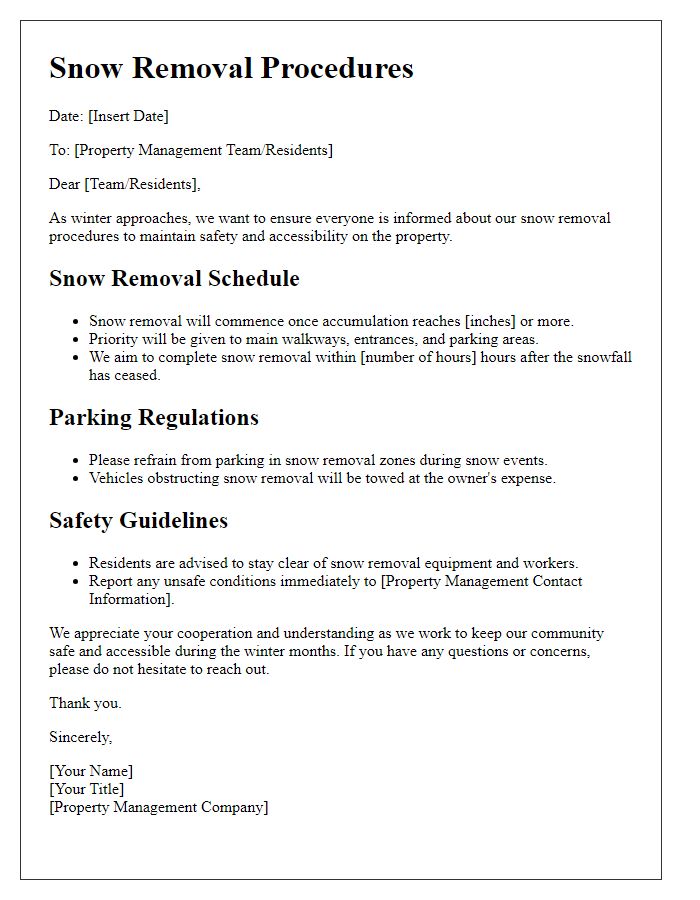
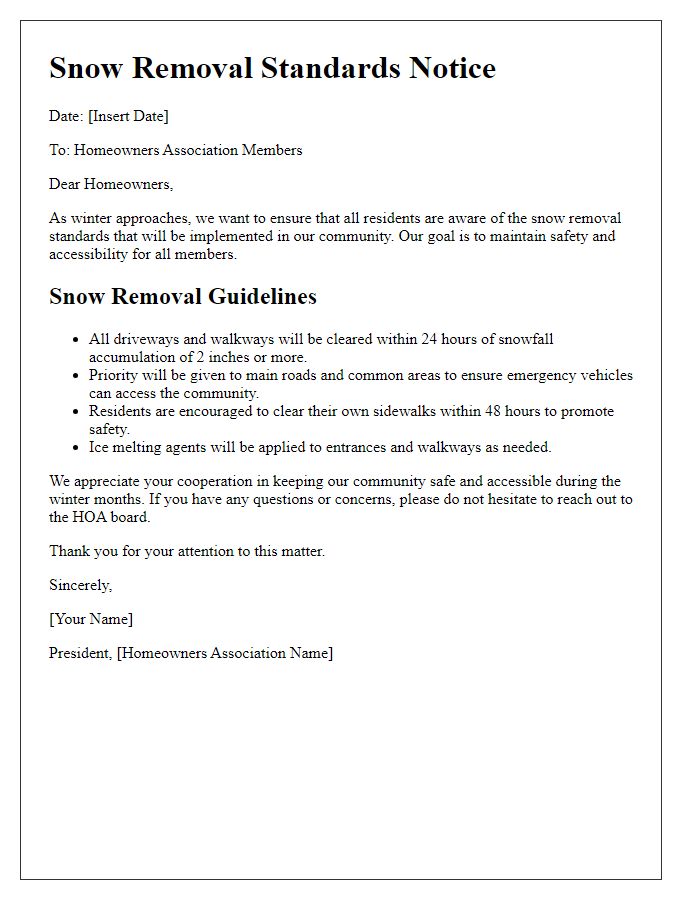
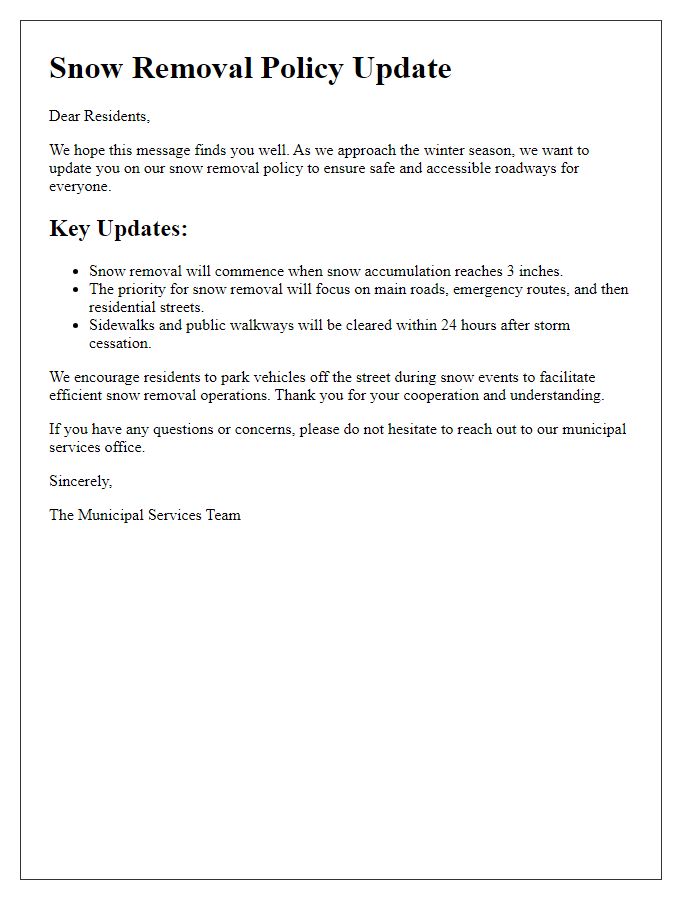
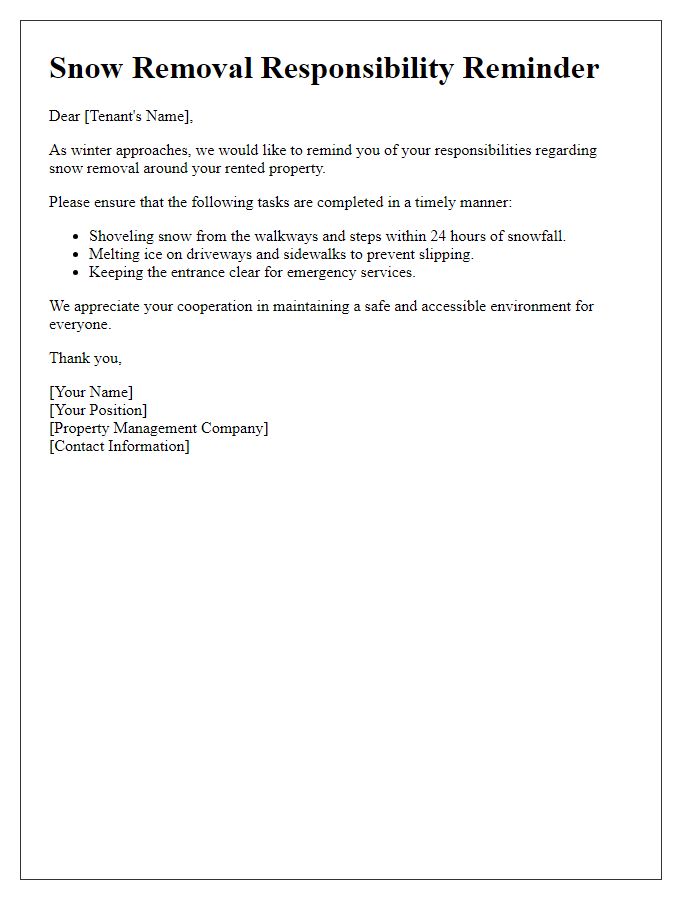
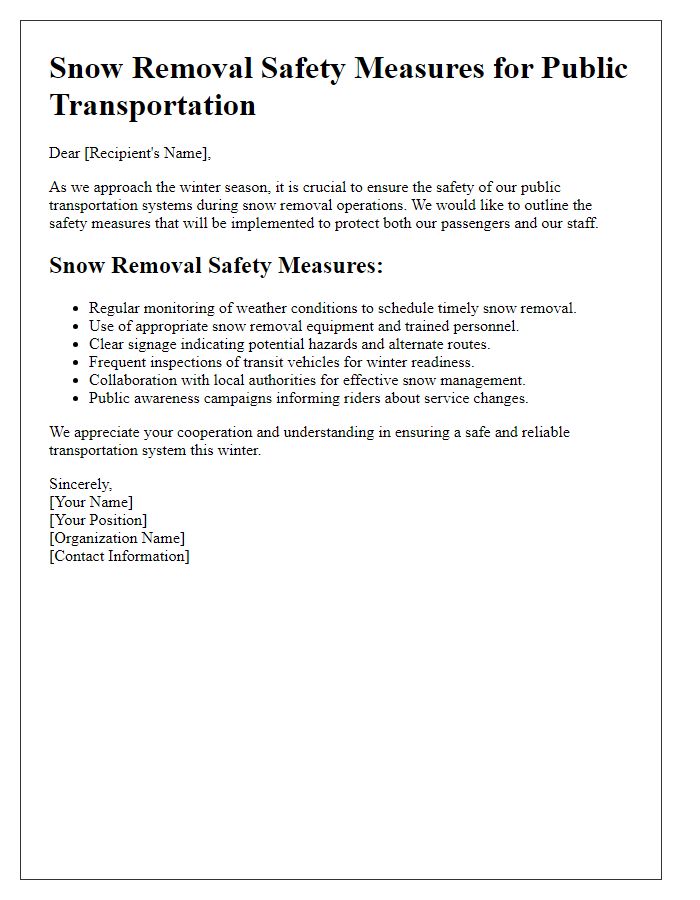
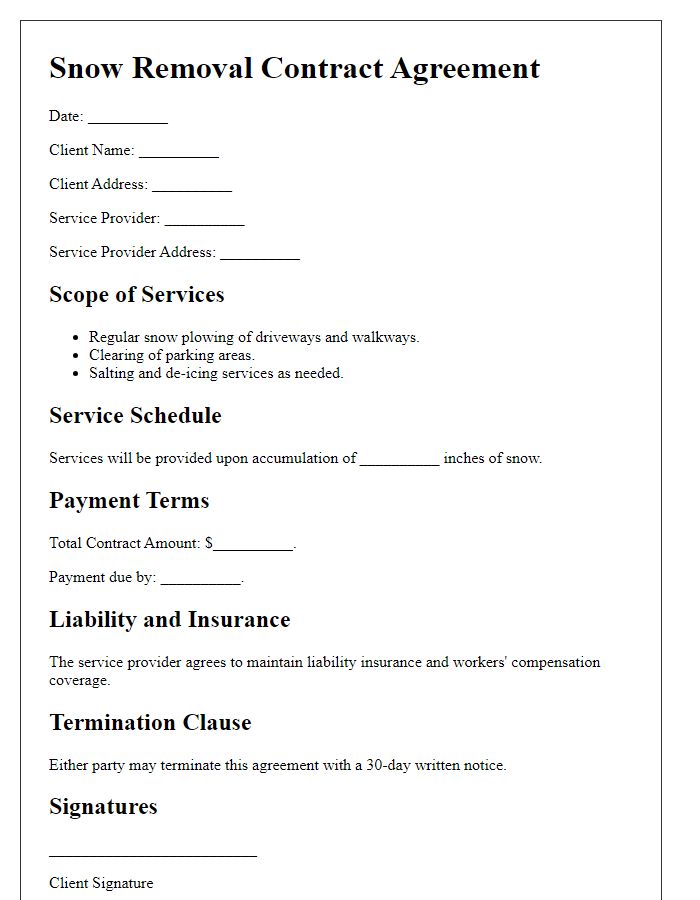
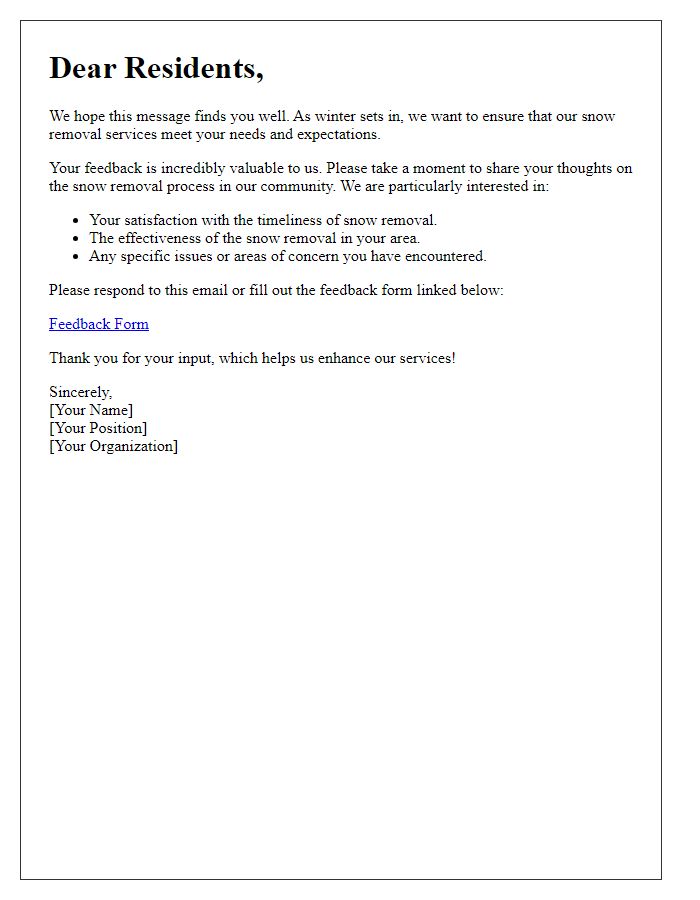



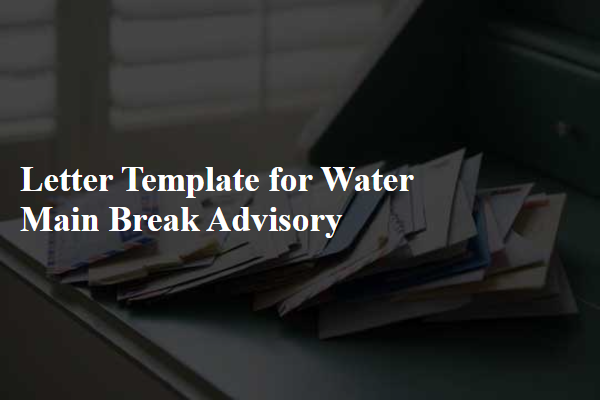
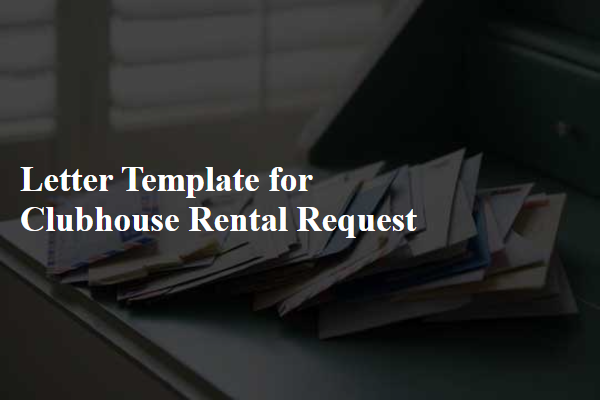
Comments